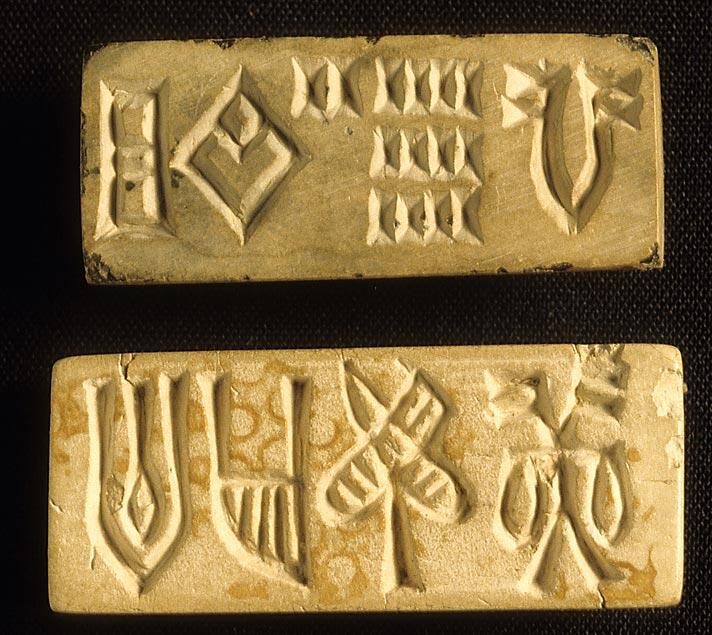Long rectangular seals found at Mohenjo-daro.
In a tour-de-force of interpretation, Iravatham Mahadevan attempts to interpret two of the most common ancient Indus signs.
Using parallels from ancient Egypt to old Tamil, he draws on his earlier interpretations of the jar sign, for example, as well as ideas from Asko Parpola to weave a remarkably consistent account of these two signs. He calls them the "alpha and omega" of the script.
It may shed light on the nature of ancient Indus society and its traces in early Dravidian culture in South India.
Few scholars have studied ancient Indus signs as long as Iravatham Mahadevan. Fewer can so deftly bring together the pieces of a puzzle that remains so complex without the evidence from a bi-lingual inscription. Whether one agrees with the conslucions or not, this is another remarkable contribution to a field we can expect more research in during the coming years, especially from India.
Mahadevan is with the Indus Research Centre at the Roja Muthiah Research Library in Chennai and is affiliated with the Tata Institute Indus script team.

